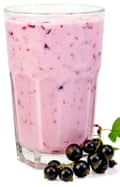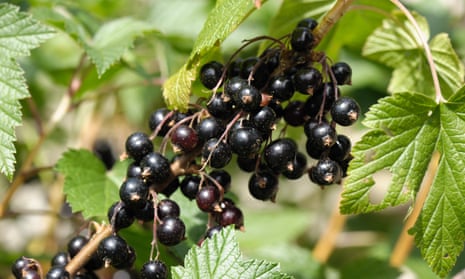Open any plant catalogue these days and you will find a spread dedicated to “superfoods”. Exotic goji berries and aronias rub shoulders with the ubiquitous blueberry and even pomegranates, along with claims of fruit being “loaded with antioxidants”. As a botanist, I’ve always been curious as to why not a single blackcurrant variety features on these pages. For what the humble British currant lacks in a far-flung backstory, it more than makes up for in phytonutrient content, leaving more celebrated superfoods in the dust. And, although they are increasingly hard to find in supermarkets, they are a doddle to grow.
When compared with the blueberry (UK sales of which have more than quadrupled in the past decade), one study showed blackcurrants can contain more than four times the anthocyanins, the purple pigment believed to be responsible for potential health benefits. Blackcurrants also exhibit more than double the antioxidant activity and a whopping 38 times more vitamin C, according to the same trial.
Considering how fussy blueberries are about growing on acid soils, opting for blackcurrants instead could give UK gardeners loads more potential nutrition for far less work. For people on chalky soils like me, this means no need to lug around bags of ericaceous compost, set up raised beds and douse on the acid-loving fertiliser. The plants are also generally up to 40% cheaper than the more trendy blueberry.

British research has noted, however, that there is a relatively wide variation of phytonutrients between blackcurrant cultivars. Fortunately, our plant breeders have regularly selected for this trait, so many modern cultivars contain far more of the good stuff then heritage types, not to mention enhanced yield and disease resistance. One of the top contenders is ‘Ben Hope’, which trials have shown could contain up to 30% more anthocyanins than others. It also has a rich, complex flavour and good resistance to rust, mildew, gall mite and leaf spot , making it perfect for organic gardeners. ‘Ben Adler’ is similarly rich in anthocyanins, with the flavour of old-fashioned varieties, and its late flowers arrive well past the danger of frost.
To grow blackcurrants for maximum health benefits, pick the sunniest spot you have. They are tolerant of a wide range of soils, but will thrive best on deep, well-drained soils that don’t dry out in summer. When it comes to eating them, sidestep the prolonged boiling for jams and cordials, as this can reduce their anthocyanin content by 85%. If you must cook them, popping them in coulis, pies and crumbles typically uses a lower cooking temperature, helping retain more of their benefits. They are also delicious picked fresh, their bright tartness working well in smoothies and fruit salads.
Email James at james.wong@observer.co.uk or follow him on Twitter @Botanygeek

Comments (…)
Sign in or create your Guardian account to join the discussion